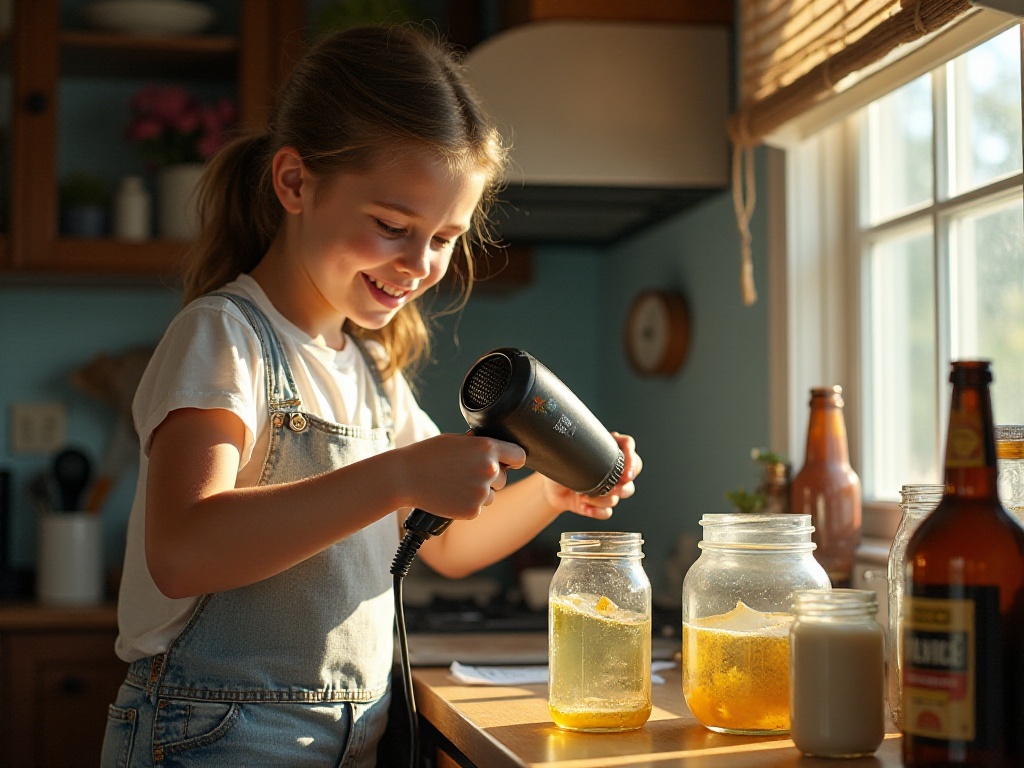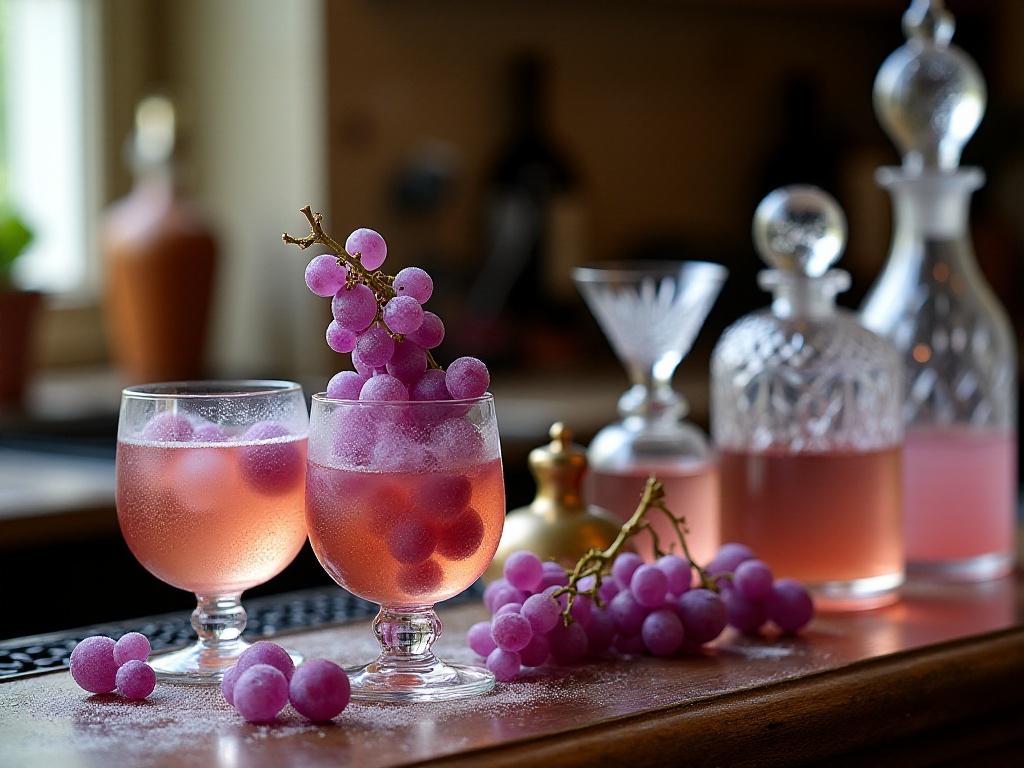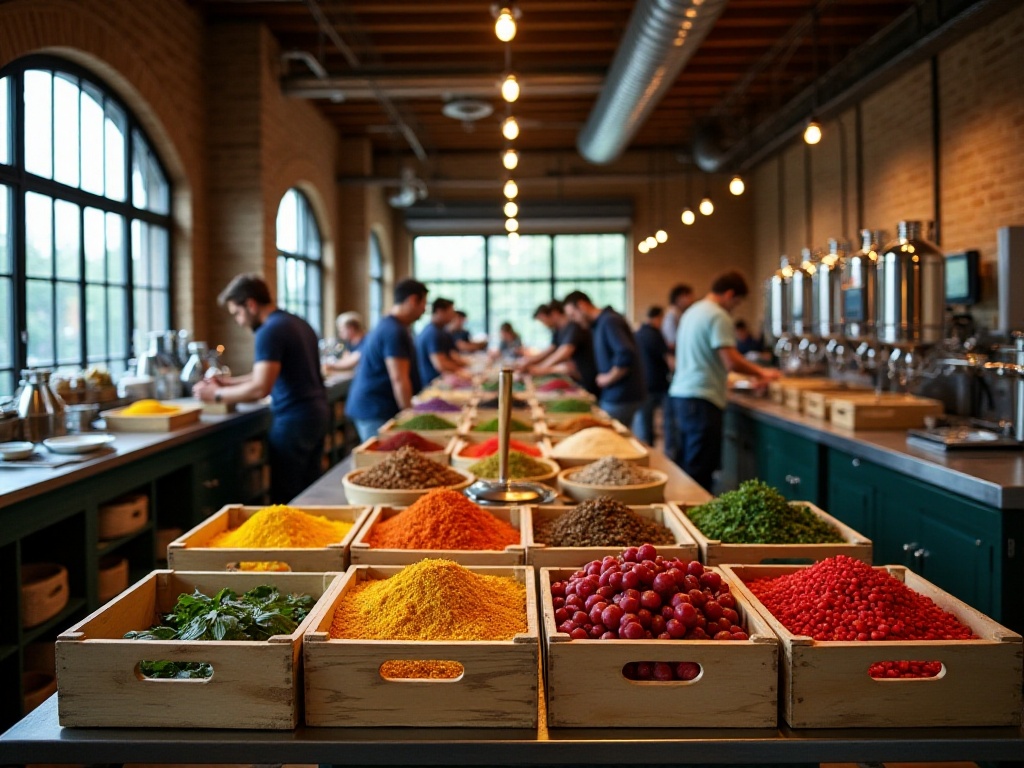
Cleaning Tips
Creative Uses for Coffee Filters
Have you ever wondered if coffee filters could be used for anything besides filtering coffee? Today I'll introduce a life hack: using coffee filters to clean hard-to-reach dust. Think about those tiny gaps in your computer keyboard that require careful cleaning to avoid damage. Now, with just a coffee filter, everything becomes simple.
When cleaning your computer keyboard, first turn it upside down and gently shake it to remove loose dust. Then, take a coffee filter and gently wipe each keycap. The fine fibers in coffee filters effectively capture dust without spreading it around. This not only keeps your keyboard clean but also prevents keys from sticking.
This method isn't just for keyboards. You can use coffee filters to clean any small crevices, like remote controls, phone keypads, or gaps in precision instruments. Coffee filters have excellent dust-absorbing capabilities - they can trap fine dust particles without scratching surfaces. Imagine cleaning a long-unused remote control - gently wiping it with a coffee filter not only removes dust but makes it look like new.
Moreover, coffee filters can be used to clean screens. Fingerprints and smudges often appear when you least expect them, and while wet cloths can clean them, they might leave water marks. Gently wiping with a coffee filter removes these marks without leaving any traces. This is especially useful for young people who enjoy watching movies or playing games on their phones or tablets.

Alternative Uses for Toothpaste
What else can toothpaste do besides cleaning teeth? Actually, it's a great tool for restoring car headlights. Have you noticed how headlights become foggy over time, affecting both appearance and nighttime driving safety? Using toothpaste's abrasive properties, you can restore headlight clarity.
The process is simple: First, take a soft cloth and apply a small amount of toothpaste. Then gently rub the headlight in circular motions. The abrasive components in toothpaste help remove the oxidized layer from the headlight surface. After rinsing with clean water, you'll find the headlights much brighter. This is not only a money-saving trick but also makes night driving safer.
Besides headlights, toothpaste has many unexpected uses. For instance, you can use it to clean stains on shoes, especially light-colored sneakers. Apply toothpaste to the stained area, gently scrub, then wipe clean with a damp cloth. The abrasive components effectively remove shoe stains, making them look new again.
Additionally, toothpaste can remove tarnish from silverware. Silver items develop oxidation from long-term use and air exposure, causing surface blackening. Gently rubbing these items with toothpaste and a soft cloth will gradually remove the tarnish, restoring the silver's original shine. This is particularly helpful for young people who collect silver jewelry or have silver cutlery at home.
Furthermore, toothpaste can clean faucets. Limescale and stains on faucets are often troublesome, but toothpaste's mild abrasive action can help remove these marks easily. Apply toothpaste to the faucet, gently wipe with a cloth, then rinse with clean water, and the faucet will shine like new.

Item Management
Managing Cables with Binder Clips
Cable management is a common headache, with wires often tangling into a mess. Today I'll share a brilliant trick: using binder clips to manage your cables. This not only prevents cables from falling but also keeps your desk tidy.
Here's how: Attach a binder clip to the edge of your desk, then thread the cables through the metal loops. This prevents cables from easily disconnecting from outlets or falling behind the desk and getting lost. This method is not only practical but also makes your workspace look more organized.
This trick isn't just for desk cable management. In the kitchen, you can use binder clips to secure cords from food processors, ovens, and other appliances, preventing them from tangling or getting pulled during use. Imagine preparing dinner with messy cables not only affecting your mood but potentially causing safety hazards. With binder clips, everything becomes orderly.
If you travel or frequently go on business trips, binder clips can also help manage charger cables. Threading cables through binder clips not only prevents tangling but also helps you quickly find the needed cable, saving time and energy. This is especially convenient when you need to charge devices in a hurry.
Moreover, binder clips can be used for managing cables behind computers. As you know, computer cables can be chaotic, making it difficult to plug and unplug devices. Using binder clips to secure these cables not only creates a neater environment behind your computer but also helps you quickly locate the right cable when changing devices, improving work efficiency.

Removing Stickers with a Hair Dryer
At home or in the office, you often encounter stubborn adhesive labels that are difficult to remove and leave residue. Today I'll introduce a very simple method: using a hair dryer to heat the sticker.
When dealing with adhesive labels, use a hair dryer to blow hot air on the label for about 30 seconds. The heat softens the adhesive, making it much easier to peel off without leaving residue. This method works not only on household containers but also on office equipment, making it simple and efficient.
This trick isn't just for removing stickers; it can be applied to other adhesive problems too. For example, if you accidentally put unwanted stickers on walls during home decoration, heating them with a hair dryer makes them easier to remove without leaving marks, saving a lot of trouble.
In daily life, hair dryers have many more clever uses. For instance, when you need to quickly dry clothes, you can use a hair dryer on low heat to dry small garments, saving time. Or if you accidentally get lipstick or other cosmetics on clothes, using hot air from a hair dryer and then gently wiping with a damp cloth can effectively remove the stains.
Additionally, hair dryers can be used to heat candles. If you've burned a candle too low and can't light the wick, use a hair dryer to heat the wax around the wick, allowing it to melt slightly before relighting. This trick not only extends candle life but also makes the candlelight more warming.

Coffee and Tea
Making Cold Brew Coffee
If you love coffee's aroma but don't like the bitterness of hot coffee, cold brew coffee is an option you shouldn't miss. While the cold brew process is simple, it requires time for steeping.
First, you'll need one part coarsely ground coffee beans and four parts cold water. Mix the coffee and water in a large jar and refrigerate for 12 to 24 hours. The steeping time affects the coffee's strength, so you can adjust according to your taste. After steeping, filter out the coffee grounds using a coffee filter or cloth, and you'll have cold brew concentrate. Dilute with water or milk to taste. This method not only produces smoother coffee but also provides refreshment on hot summer days.
The charm of cold brew coffee lies in its smoothness and freshness. Traditional hot coffee might extract bitter compounds due to high temperatures, while cold brew avoids this. Cold brew preserves the coffee beans' aroma and flavor while reducing bitterness, allowing you to enjoy a smoother taste.
If you're trying cold brew coffee for the first time, experiment with different steeping times and ratios to find your perfect taste. Some people prefer a stronger flavor and might choose longer steeping times, while others prefer it lighter and might shorten the steeping time or increase the water ratio. The beauty of cold brew coffee is that it can be adjusted to personal preference.
Furthermore, cold brew coffee can serve as a base drink, mixed with various flavored syrups or additives. For example, adding caramel or vanilla syrup can make your cold brew more diverse, satisfying different taste preferences. You can also try adding lemon or orange peel, which not only enhances flavor but also adds a touch of freshness.

Homemade Herbal Iced Tea
Iced tea is a perfect summer refreshment, and adding fresh herbs can elevate its taste to another level. Today we'll make a mint and lemon herbal iced tea.
First, brew a pot of strong tea and let it cool. Then, place sliced lemons and a generous handful of fresh mint leaves in a large teapot. Pour in the cooled tea and add sweetener to taste, such as honey or syrup. Refrigerate the teapot for several hours to allow the mint and lemon flavors to fully infuse. When serving, add ice cubes, and you'll have a refreshing, aromatic iced tea.
Homemade herbal iced tea isn't just refreshing; it's rich in natural antioxidants and vitamins. Mint leaves not only add coolness but also aid digestion and relieve stomach discomfort. Lemon provides abundant vitamin C, boosts the immune system, and its acidity balances the tea's bitterness, creating a more harmonious taste.
If you want to try different herb combinations, you can add basil leaves or rose petals, which not only enhance flavor but also make the iced tea more visually appealing. You can also try using different teas like red tea, green tea, or oolong tea as the base, each bringing its own unique flavor experience.
Moreover, homemade iced tea has the advantage of controlling sugar content. Many commercial iced teas contain high amounts of sugar and artificial sweeteners, while homemade versions can be adjusted according to health needs. Using honey as a sweetener is not only healthy but also adds unique flavor.
Sparkling Drinks
Fruit Juice Sodas
Sparkling drinks are popular, but many commercial products contain high amounts of sugar and artificial additives. Today, I'll teach you how to make healthy and delicious homemade fruit juice soda.
Taking orange soda as an example, first prepare a glass of fresh orange juice. Pour it into a glass, then slowly add soda water or sparkling water until the glass is about seven-tenths full. Add ice cubes and an orange slice for garnish according to taste. This homemade orange soda is not only refreshing but also rich in vitamin C, making it a great summer choice.
Homemade fruit juice sodas are not only healthy but can be varied according to seasonal fruits. For example, you can make watermelon soda in summer for cooling refreshment, apple soda in autumn for a taste of the season, or use tropical fruits like mango or pineapple in winter for a warm feeling.
Additionally, you can add different herbs or spices according to your taste. Mint leaves can add coolness, ginger can add a spicy kick, and lemongrass can enrich the aroma. These small additions not only enhance flavor but also make the drink more personalized.
Spiked Lemonade
While lemonade itself is a refreshing drink, adding alcohol makes it more interesting. Today I'll share how to make vodka lemonade.
First, prepare lemonade, either store-bought or freshly squeezed. Then, mix in a ratio of 2 parts lemonade to 1 part vodka. Pour the mixture into an ice-filled glass, stir well, and optionally add some floral liqueur or crushed berries for extra flavor. This drink is perfect for summer parties or evening relaxation, bringing both refreshment and enjoyment.
Vodka lemonade is a popular cocktail that's simple to make yet offers complex flavors. You can adjust the vodka ratio to your preference or try different lemonade recipes. For example, adding honey can make the drink sweeter, while using fresh lemon juice instead of prepared lemonade can enhance the flavor.
Furthermore, you can experiment with other alcoholic beverages - gin can add a bitter note, while rum can make the drink sweeter. Different spirits not only change the drink's taste but also make evening drinks more varied.
Through these life hacks and homemade beverage recipes, I hope you'll find more joy and convenience in daily life. There's wisdom in everyday living, and with attention and innovation, we can make ordinary days more interesting and colorful. Try these tips next time to bring some surprises to yourself and your family. Remember, small changes in life often bring great rewards.








